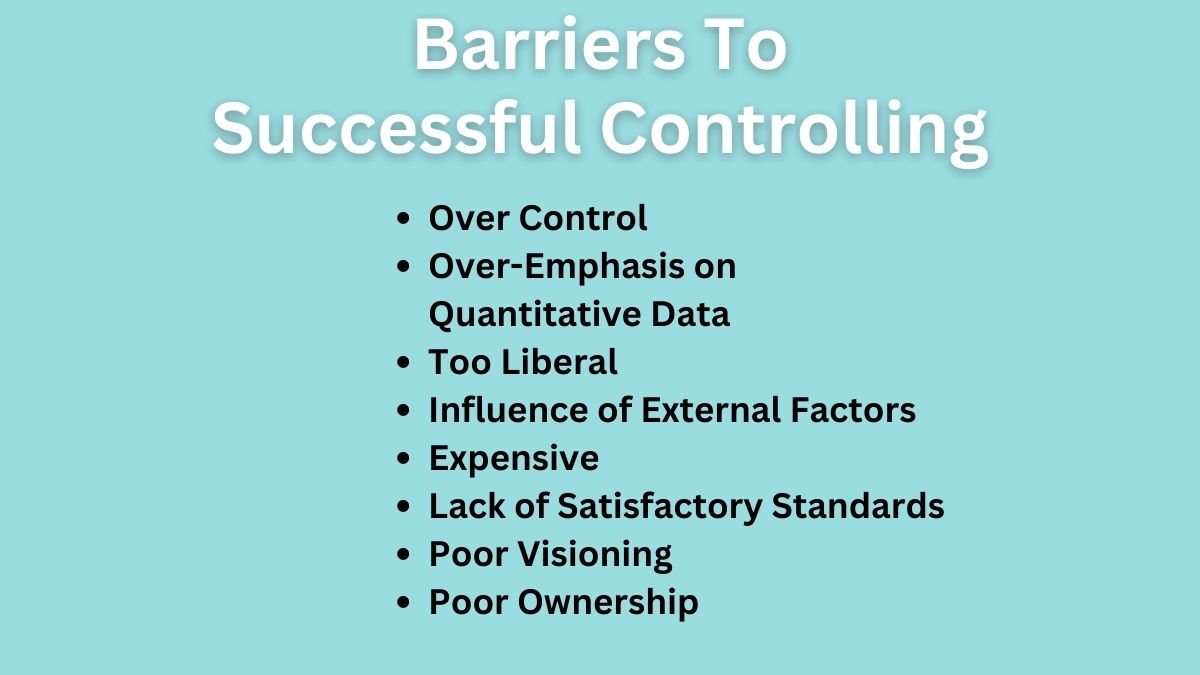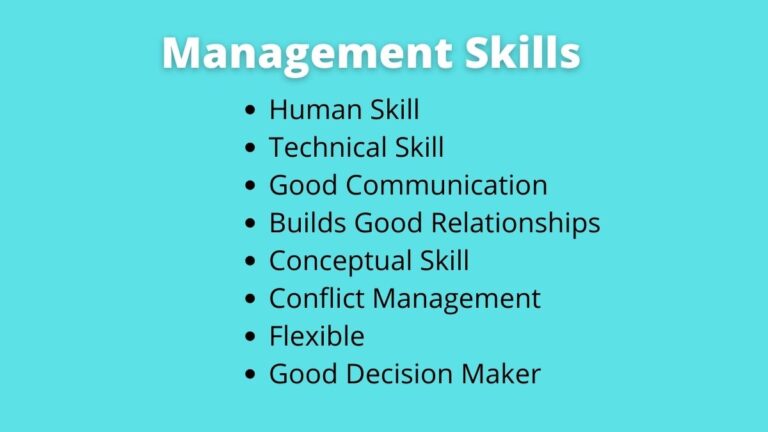8 Potential Barriers To Controlling in the Workplace
Potential Barriers To Controlling
Controlling is an indispensable function as it is essential to all areas of management but it can not be free from defects. A manager may face various problems while introducing and practicing a controlling system. Here are some potential barriers managers may face during the controlling process in an organization.
Over Control
In organizations that try to control too many things, this becomes problematic for employees. Employees may find the control system unsatisfactory if it influences their everyday activities and personal behavior. They believe that the control system unfairly restricts their personal freedom.
Over-Emphasis on Quantitative Data
If the control system just focuses on quantitative factors and provides no room for analysis or interpretation, it can be considered to be too limited. Employees resist the intent of the control system by focusing their efforts on the performance indicators being used.
The control system may have issues due to an overemphasis on quantitative data, a desire to achieve short-term goals at the price of long-term investment, and strict measures.
Too Liberal
Employees feel that they can perform the given job at any time if control measures are too liberal and flexible.
In such situations, employees become careless and do not perform assignments properly. Poor quality standards result in costly waste and consumer dissatisfaction.
Related: Process of Controlling
Influence of External Factors
The control system may be effective itself but external factors such as government policy, technological changes, changes in trends, etc. may have an adverse effect. These factors can not be checked by the control system in the organization.
Expensive
Every employee of the company needs to have their performance evaluated and reported to a higher authority. For this, it is necessary to employ a number of people.
The performance will be observed by the superiors if it cannot be quantified. The control system spends a lot of money exercising it. This makes higher authorities to be reluctant to introduce and continue the control system.
Lack of Satisfactory Standards
The performance of certain activities involving human behavior can not be fixed in terms of quantities. It is difficult to fix standards for activities like public relations, research, customer satisfaction, the morale of employees, etc.
Read Also: Types of Control
The evaluation of the performance of employees engaged in such activities will be difficult. If the standards of evaluation become unsatisfactory employees do not trust and follow them. This causes problems in the control system.
Poor Visioning
Mostly, organizational leaders or managers lack a clear vision about whether the controlling has a long or short-term vision. By definition, controlling as meeting standards and actual performance focuses on short-term vision.
A controlling system cannot be developed with a short-term perspective. A controlling system requires a long-term vision and plans to realize it. It is necessary for the organization to have a long-term vision if it is to be successful and effective.
Poor Ownership
Ownership in controlling is essential. In general, employees think that the controlling system is solely based on managerial vision, action, and wish. If they think it is for the management’s wish and accomplishment, controlling can not be effective. Thus, management should be aware of developing ownership over all the people involved in the organization.
Sajan Kushmi is a content writer with more than 4 years of experience. He holds BIM Degree. He write on the topics related to Management, Marketing, and Entrepreneurship.






